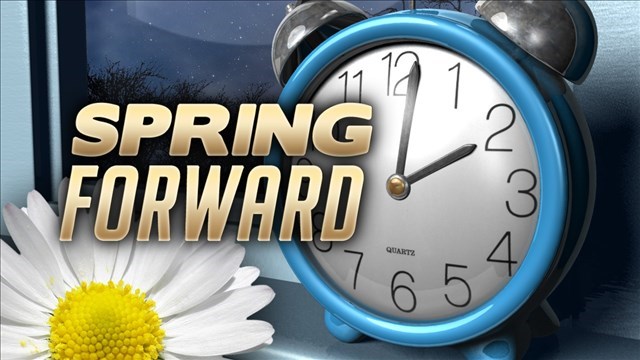Daylight Saving Time begins Sunday, March 12 at 2:00 am
Set your clocks ahead 1 hour Saturday night!

When local standard time reaches
Sunday, March 12, 2017, 2:00 am clocks are turned forward 1 hour to
Sunday, March 12, 2017, 3:00 am local daylight time instead
Sunrise and sunset will be about 1 hour later on Mar 12, 2017 than the day before. There will be more light in the evening.
History of Daylight Saving Time
Daylight Saving Time in the United States
In the United States, “Fast Time” as it was called then, was first introduced in 1918 when President Woodrow Wilson signed it into law to support the war effort during World War I. The initiative was sparked by Robert Garland, a Pittsburgh industrialist who had encountered the idea in the UK. Today he is often called the “Father of Daylight Saving”.
Only seven months later, the seasonal time change was repealed. However, some cities, including Pittsburgh, Boston, and New York, continued to use it until President Franklin D. Roosevelt instituted year-round Daylight Saving Time in the United States in 1942.
War Time Daylight Saving Time
Year-round Daylight Saving Time, also called “War Time”, was in force during World War II, from February 9, 1942, to September 30, 1945, in the US and Canada. During this time, the US time zones were called “Eastern War Time”, “Mountain War Time”, “Central War Time”, and “Pacific War Time”. After the surrender of Japan in mid-August 1945, the time zones were relabeled “Peace Time”.
United States Uniform Time Act of 1966
From 1945 to 1966 there were no uniform rules for Daylight Saving Time in the United States and it caused widespread confusion especially for trains, buses, and the broadcasting industry. As a result, the Uniform Time Act of 1966 was established by Congress. It stated that Daylight Saving Time would begin on the last Sunday of April and end on the last Sunday of October. However, states still had the ability to be exempt from Daylight Saving Time by passing a state ordinance.
Modern Daylight Saving Time History in the United States
The United States Congress extended Daylight Saving Time to a period of ten months in 1974 and eight months in 1975, in hopes to save energy following the 1973 oil embargo. The trial period showed that Daylight Saving Time saved the energy equivalent of 10,000 barrels of oil each day, but Daylight Saving Time still proved to be controversial. Many complained that the dark winter mornings endangered the lives of children going to school.
United States Energy Policy Act of 2005
After the energy crisis was over in 1976, the Daylight Saving Time schedule in the US was revised several times throughout the years. From 1987 to 2006, the country observed Daylight Saving Time for about seven months each year. The current schedule was introduced in 2007 and follows the Energy Policy Act of 2005, which extended the period by about one month. Today, Daylight Saving Time starts on the second Sunday in March and ends on the first Sunday in November.
















